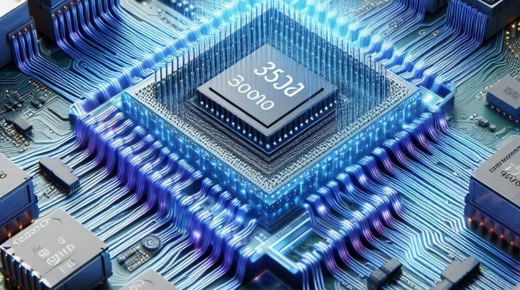The evolution of semiconductor packaging has become increasingly central to performance improvements across next-generation systems. With transistors nearing physical limits and Moore’s Law slowing, packaging architecture now carries the weight of innovation. Embedded bridge technologies, particularly in 2.5D and 3D configurations, are emerging as essential for solving interconnect efficiency challenges. Erik Hosler, a leader in lithography and semiconductor innovation, recognizes how embedded solutions support greater bandwidth, tighter integration and scalable architecture across chiplets and dies.
By enabling higher interconnect density, lower latency and improved thermal performance, embedded bridge techniques are not just enhancing current designs but shaping the direction of advanced semiconductor applications.
The Need for Smarter Interconnects
As AI, high-performance computing and edge devices continue to drive chip complexity, traditional planar packaging struggles to keep pace. In monolithic designs, increased logic density introduces thermal bottlenecks and signal integrity issues. Interconnects become longer and more inefficient as chip size grows, impacting performance per watt and overall throughput.
2.5D and 3D packaging provide pathways to break this bottleneck. While 2.5D allows side-by-side integration on an interposer, 3D packaging stacks die vertically. Both approaches reduce critical distances for interconnects and enable heterogeneous integration of logic, memory and analog components.
Embedded bridges further enhance these configurations by directly linking chiplets within or across layers, bypassing the need for a massive passive interposer or external substrate routing.This embedded strategy improves signal propagation and power delivery while simplifying system complexity, leading to better yields and lower parasitic effects.
The Role Of Embedded Bridges in 2.5D Integration
2.5D packaging typically uses an interposer as a passive silicon bridge to connect logic and memory dies. As systems become denser, passive interposers alone cannot meet the demands for speed and miniaturization. Embedded bridges, often built using silicon or organic substrates, can route signals with much shorter path lengths and greater customization.
For example, a silicon bridge embedded between two high-bandwidth memory stacks can reduce latency and power by routing signals directly rather than detouring through the interposer layer. These bridges can include active logic, such as signal retimers or low-power repeaters, to maintain signal integrity across long connections.
Design flexibility is also improved, as bridges can be positioned to support chiplet diversity, enabling a modular approach to system scaling. By isolating critical signal paths on the embedded bridge, electrical interference is minimized, improving performance consistency across designs.
Accelerating 3D IC Integration Through Embedded Structures
In 3D IC packaging, where vertical stacking is employed, embedded bridges help solve challenges such as thermal dissipation and complex Through-Silicon Via (TSV) management. By embedding routing structures between layers, chip designers can offload critical paths from the dense TSV grid, simplifying design rules and improving layout freedom.
This approach becomes especially valuable in memory-on-logic configurations, where high-throughput, low-latency communication is needed between compute and storage elements. Embedded bridges can operate as localized highways, reducing interlayer delays and helping designers push bandwidth and latency to meet AI and data-intensive workloads.
The integration of bridges into the middle of the stackbetween compute dies or memory controllersalso supports more efficient heat dissipation by distributing thermal loads and reducing the number of active TSVs required. These structures open the door to hybrid bonding techniques, where copper-to-copper interfaces enable even tighter integration and minimal signal degradation.
Manufacturing Precision and Inspection Requirements
Manufacturing embedded bridge solutions requires exceptional precision. The bridge must align with multiple dies and layers, often across sub-10µm features. Advanced lithography and material deposition processes are essential to ensure reliable signal transfer and thermal pathways.
Defect detection tools are critical to validating embedded structures at each phase of the fabrication process. Erik Hosler observes, “Free-electron lasers will revolutionize defect detection by offering unprecedented accuracy at the sub-nanometer scale.” With more accurate tools, manufacturers can catch and correct issues early, leading to higher yields and more reliable chip performance.
This level of precision also allows chipmakers to confidently pursue tighter layouts, finer features and more aggressive interconnect design, enhancing overall system capability without compromising quality.
Modular Architectures and AI Workloads
One of the most compelling advantages of embedded bridges is their support for modular chiplet architecture, an increasingly important design model for AI and machine learning workloads. Rather than building large monolithic dies, designers can now develop smaller, specialized chiplets and use bridges to interconnect them efficiently.
This modularity offers flexibility when developing AI systems that combine logic, memory and custom accelerators. Embedded bridges allow for direct, high-speed communication between these elements, reducing bottlenecks and improving the performance-per-watt ratio.
For data center inference engines or edge AI processors, embedded bridges enable real-time, low-latency communication that was previously difficult to achieve. The result is an architecture that can adapt to evolving workload requirements while optimizing system-level performance.
Alignment With New Materials and Fabrication Methods
As semiconductor fabrication continues to evolve, embedded bridges are also well-suited to complement advances in material science. Substrates like glass and next-generation organic laminates offer distinct electrical and thermal properties that can enhance signal transmission and heat dissipation when paired with embedded routing.
These materials open new possibilities for customized bridge designs tailored to specific performance goals, whether in signal integrity, power delivery, or heat transfer. The use of thinner, more thermally conductive materials also supports the vertical compression of chip stacks, making compact 3D packaging more feasible across consumer and industrial applications.
By combining these material advantages with embedded techniques, manufacturers are unlocking a new design frontier that goes beyond conventional planar scaling.
Foundry Strategies and Industry Momentum
Embedded bridge packaging is gaining momentum among leading foundries and OSATs as part of broader heterogeneous integration roadmaps. Designers are embracing co-optimization strategies, where bridge location, material properties and die placement are planned in parallel to maximize performance.
This level of co-design is essential for emerging applications in quantum computing, photonics and ultra-low-power mobile devices. In these domains, signal timing, noise isolation and layout precision must be controlled tightly,something embedded bridges are uniquely capable of supporting.
As adoption expands, standardization of bridge interfaces and manufacturing protocols will be critical. Establishing shared design rules and fabrication methods can ensure interoperability and reliability across global supply chains.
Broadening The Future of Chip Design
Embedded bridges are more than an interconnect innovation. They represent a new mindset in chip design. By focusing on localized optimization and modular architecture, designers can create systems that are faster, more adaptable and more energy-efficient.
In an industry driven by shrinking nodes and increasing demand, embedded bridge technologies in 2.5D and 3D packaging are becoming indispensable. They offer an elegant solution to longstanding interconnect challenges and pave the way for new possibilities in high-performance and low-power computing.Their continued refinement will influence everything from how we build AI processors to how we scale quantum systems, bridging the gap between design aspirations and real-world applications.

